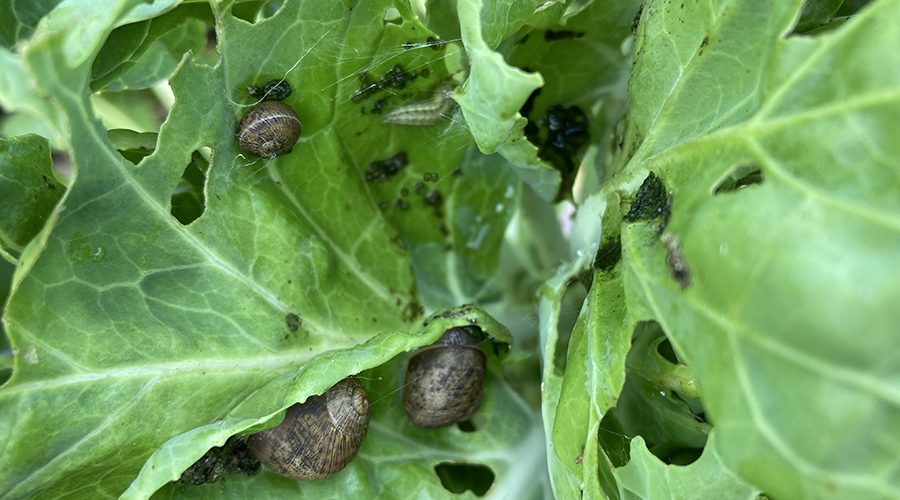A Research-Informed Guide to Eco-Friendly Pest Control:
Controlling pests like slugs and snails is a persistent challenge for gardeners, particularly those committed to organic or wildlife-friendly methods. While synthetic molluscicides such as Metaldehyde have historically been effective, they carry serious environmental risks, including toxicity to wildlife, pets, and water systems. In fact, Metaldehyde was banned for outdoor use in the UK in 2022 due to its ecological impact.
But there’s good news: used coffee grounds—a common household waste—offer a natural, accessible, and eco-conscious alternative, with emerging scientific support for their efficacy.
🔬 Scientific Basis: Why Coffee Grounds May Deter Slugs and Snails
Slugs and snails avoid environments that are abrasive, dry, or chemically irritating. Coffee grounds fulfil several of these deterrent criteria:
Coarse Texture: The abrasive nature of dry coffee grounds creates a physical barrier that slugs and snails are reluctant to cross.
Caffeine Content: A 2002 study conducted by the U.S. Department of Agriculture (Hollingsworth et al.) found that a 1-2% caffeine solution killed up to 95% of slugs and snails within 48 hours. Even concentrations as low as 0.01% were shown to reduce feeding activity significantly.
Aromatic Properties: Anecdotal evidence from gardeners and horticulturalists suggests that the strong smell of coffee may act as an additional olfactory deterrent.
🧪 Citation: Hollingsworth, R. G., Armstrong, J. W., & Campbell, E. (2002). Caffeine as a repellent and toxicant for slugs and snails. Nature, 417(6892), 915-916.
✅ How to Use Coffee Grounds Effectively in the Garden
While simply sprinkling used coffee grounds around plant bases can have some effect, a more controlled application increases effectiveness:
Option 1: Direct Application
Apply a 2–3 cm wide band of dry, used coffee grounds around vulnerable plants.
Reapply after rain or heavy watering, as the grounds degrade and lose potency over time.
Option 2: DIY Caffeine Spray (More Potent)
Ingredients:
2 cups used coffee grounds
500 ml water
Strainer or cheesecloth
Spray bottle
Instructions:
Simmer grounds in water for 15–20 minutes.
Strain the liquid and allow it to cool.
Apply directly to the soil around the base of plants, avoiding leaves and blossoms.
Repeat every few days or after rain.
This method creates a mild caffeine solution that may more closely resemble the concentrations tested in published studies.
⚖️ Environmental Considerations: Is Caffeine a Safe Pesticide?
While caffeine is a naturally occurring compound, it is not entirely selective in its toxicity. The same USDA study noted potential impacts on beneficial invertebrates such as earthworms and pollinators, though more research is needed to quantify risk in open garden settings.
⚠️ Use Recommendation: Limit application to targeted areas in small-scale domestic gardens, where unintended exposure to non-target species can be minimized.
♻️ Additional Benefits: Coffee Grounds as Soil Amendments
Even after pest control use, spent coffee grounds retain agricultural value. They contain approximately:
2% nitrogen
0.3% phosphorus
0.3% potassium
These elements are essential macronutrients for plant growth, making coffee grounds suitable for:
Composting to improve microbial activity and organic matter
Mulching to improve moisture retention and suppress weeds
✅ Grounds used for pest control can be composted after application, closing the loop on waste and sustainability.
🌿 Conclusion: An Evidence-Based Approach to Natural Gardening
At Grounds for Good, our mission is to champion sustainable, science-backed gardening solutions that reduce waste and minimize ecological harm. Waste coffee grounds offer an effective, low-risk, and accessible option for deterring slugs and snails — with credible research supporting their mode of action.
While not a silver bullet, they represent a valuable tool in the organic gardener’s toolkit, particularly when combined with other integrated pest management (IPM) strategies.
🧠 Summary: Key Facts at a Glance
|
Feature |
Coffee Grounds as a Pest Deterrent |
|
Method |
Direct barrier or caffeine spray |
|
Mode of Action |
Abrasive texture, caffeine toxicity |
|
Scientific Backing |
USDA research (2002, Nature) |
|
Environmental Risk |
Low in domestic use; caution for pollinators |
|
Added Value |
Nitrogen-rich compost material |
#NaturalSlugControl #EcoFriendlyPestControl #CaffeineInTheGarden #OrganicGardeningTips #SustainableGardening #CoffeeGroundsForPlants #ChemicalFreeGardening #GroundsForGood #ZeroWasteGarden #BackyardScience
🌱 Ready to ditch chemical pesticides for good?
Start reusing your coffee grounds — for your plants, your soil, and a better planet.

